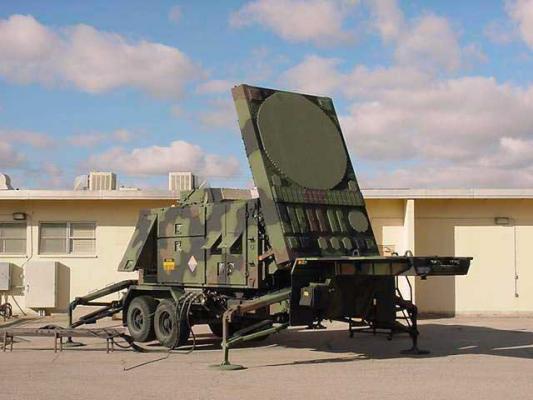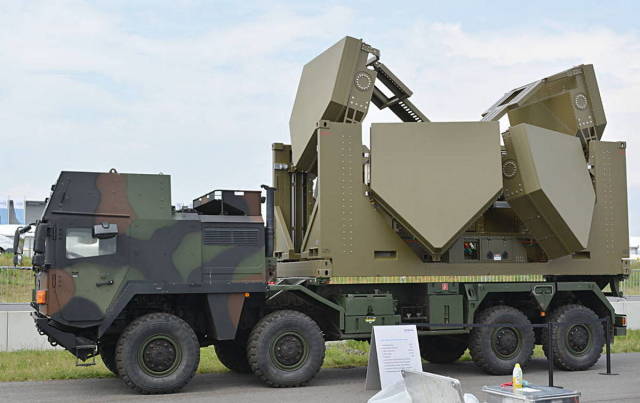.
I have an academic background in business (and engineering). This means I was indoctrinated at the university, indoctrinated with an aversion against wasteful use of resources.
Parkinson's law is the adage that work fills the time available in a project - regardless of how much time is available. Something similar is going on with budgets. It's only human that people become wasteful if equipped with a lavish budget.
Something like this is going on with radar equipment.
To equip armies and navies with (combat-related) radars is being considered self-evident, albeit it's not always this clear-cut if you look at the technology. The Russian army would likely fare better if its battlefield air defence was resting on the "cheap" Sosna-R which does not use a radar than on the now serially self-embarrassing radar-equipped Tor systems. The radar emissions can be detected even by satellites, and intelligence on where and when such radars are active informs the drone operational command, leading to destruction of Tor systems when they are not radiating.
Likewise, air defence warships have huge and powerful air search radars. The explanation for the same has long become questionable, considering that even the best ship-mounted radar would still be quite useless against the Super Etendard/Exocet combination attack that sunk HMS Sheffield in 1982 (aircraft very low level approach below the ship's radar horizon for almost all the time, seaskimming missile). AAW warships depend on airborne radars (AEW) and active radar seeker missiles (for non line of sight shots) anyway, so why the distinction of specialised AAW warships at all? Their radar betrays them and doesn't help against many normal threats any more than a normal-sized multipurpose search/fire control radar would.
Yet some radars make sense, or at least seem to make sense, on a battlefield. Especially the multipurpose radars are enticing, artillery has good use for muzzle velocity radars and I personally expect tethered rotary drone radars for use by motor vehicles on the move, at least in the ground surveillance task out to 20 km (detection range against motor vehicles).
We should be wary of relying very much on battlefield radars or of spending terribly much on battlefield radars becuase countermeasures including artillery fires on detected radars are likely against a 1st or 2nd rate opposing force.
Luxury radars are another problem; needlessly expensive "99% solutions". The most obvious such approach is the multi-antenna AESA radar.
https://defense-update.com/20191017_ltamds.html
Classic radar antennas need to be mechanically turned into different directions to search all-round, which is slow. AESA and PESA antennas can switch the direction almost instantly, albeit an AESA antenna is limited to 90...120° in this. So the wasteful "99% solution" approach is to mount four such AESA antennas to cover the whole 360°, even on tanks. That's an issue, becuase old school mechanical antennas are cheap metal powered by a single transceiver unit linked by cables, while the AESA antennas are very expensive electronics (up to hundreds of individual transceiver/receiver modules) themselves.
The Patriot air defence system was always crap because its big electronically steered radar was unable to rotate for 360° coverage. Its field of view was only 90...120° (sources disagree, but performance would be degraded beyond 90° anyway).

Patriot's AN/MPQ-53 radar, the work of idiots or saboteurs
It was an air defence system for a forward-facing line of SAM batteries, which is tactically an idiotic (too easily defeated) approach. You needed four Patriot batteries to protect one place not quite as well as a single SAMP/T battery can defend it using a rotating AESA radar antenna.
So the obvious approach to resources-irresponsible armed forces was to push for a Patriot upgrade/successor with four AESA antennas instead of one or two rotating ones. And then the system grew so irresponsibly expensive that of course Germany ended up buying zero copies (only in part because of this, admittedly).
99% solutions are stupid. It's much better to go along with "good enough", and survivability is extremely important. A vehicle with four fixed radars (360°) is less useful than two vehicles with two rotating radars. The latter can be used alternatingly, with one vehicle breaking contact or lying in wait while the other one radiates. The radiating one can shut down when an anti-radar missile or drone appears to approach it (thus making the attack more difficult), and the second one activates. A freak accident or lucky shot may disable a radar vehicle, and the all-in-one-basket solution would be a complete failure, while the two radar vehicles solution would still be fully capable for most of the time.
We should strive for robust, good-enough equipment, not for 90...99% solutions in the armed forces!


Very interesting post.
ReplyDeleteI always wandered why to have a radar attached to the launcher when it's the objective of antiradar missiles. It seems much more sensible to have the cheapest possible radar antenna, even without processing units, separated from the rest of the system and connected by com link or a cable to the signal processing unit, and this connected the same way to the launcher.
That way you can have your radar antenna destroyed and use one or more replacements.
Maybe I'm missing something that I don't understand.
JM
Well, the transceiver needs to be at the antenna afaik. The processing could be relocated, connected by a fibreoptic cable. The costs problem today is that AESA antennas are so good, and their antenna modules are transceiver and antenna in one.
DeleteTo separate components between different vehicles also reduces mobility very much, it adds a drill for connecting and disconnecting that takes minutes (and is an accident hazard when you also disconnect an electricity generator).
Anti-radar missiles are stupid; it's easy to deceive them, such as by radiating towards a Luneburg lens.
The bigger problem is what we see in Ukraine; recce assets with imaging seeing the target vehicle, and missile launch smoke trails.
@SO: "Anti-radar missiles are stupid; it's easy to deceive them, such as by radiating towards a Luneburg lens."
DeleteAnd you know this true with current missiles how? INS was integrated into USN and USAF missiles like RIM-66/67, SM-2/ER in the late 1960s, including the “stupid” anti-radiation variants (hint: some missiles can track the last emitter location, not just use home on jam and other techniques to destroy their targets). You might want to study the employment of RGM-8H, a surface-to-surface anti-radiation version of the RIM-8 Talos SAM in Vietnam.
The current HARM has INS/GPS guidance installed; the following tells you that antiradiation missiles have had a lot going on under the hood for decades:
"The AGM-88E Control Section incorporates a GPS aided inertial navigation suite (INS) and a Weapons Impact Assessment (WIA) transmitter. The GPS/INS provides AARGM point-to-point capability and missile avoidance/
impact zones.” https://www.af.mil/About-Us/Fact-Sheets/Display/Article/104574/agm-88-harm/
GAB
Oh, come on. I know about the very expensive AGM-88E, the posterchild of ARMs that shall not fail so badly as original HARM over Yugoslavia did.
DeleteEven an anti-radar missile that continues to fly along the direction of the last emissions and uses an imaging sensor and pattern recognition algorithms to pick up the radar target after it ceased to emit is stupid.
For one, it would still aim at a good decoy that gets its luneberg lens radiated at by the actual radar. Second, any radar on a mast or with rapid disguise capability (net, folding container etc.) can defeat an AGM-88E.
Imagine this https://www.saab.com/products/camosphere with a decoy for imaging sensors nearby.
Meanwhile, a drone having a 30x zoom picture of a missile launch location or detected and IDed radar cannot be negated by lowering a mast or using quick disguise.
So yes, a missile is stupid. I doubt AGM-88E is worth its USD 1+M price in air/land.